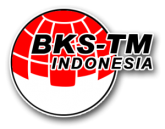Design of Bridging Bridging System for Reporting Loading and Unloading of Goods in Imports and Online TPS Application at the Directorate General of Customs and Excise (DJBC) (Case Study: PT. PolyChemLindo)
Abstract
Temporary Piling Places are used to hoard imported goods while awaiting their release from customs areas in accordance with the provisions of customs law. PT. Polychem Lindo is a company that functions as a TPS (Temporary Hoarding Site) that reports data starting from goods coming off the ship to goods leaving the gate or vice versa.
At present the data reported to DJBC (Directorate General of Customs and Excise) is still in manual form even though a web service has been made to integrate the data into DJBC Online TPS, so that information about goods data in real time and monitor its movements from time-to-time.
The design of the bridging application system The reporting documents of hoarding of loading and unloading of imported goods with the Online TPS DJBC application (Directorate General of Customs and Excise) is carried out so that the document entry process is only done in one transaction. This research produces a Bridging System program that functions to bridge the two running systems so that the data input process runs more efficiently. Bridging system is the use of web service information technology facilities that allows two different systems at the same time to be able to carry out two processes without interference from one system on another system.
Keywords
Full Text:
PDFDOI: http://dx.doi.org/10.36055/fwl.v2i1.7497
Refbacks
- There are currently no refbacks.

FLYWHEEL: JURNAL TEKNIK MESIN UNTIRTA is licensed under a Creative Commons Attribution 4.0 International License.








